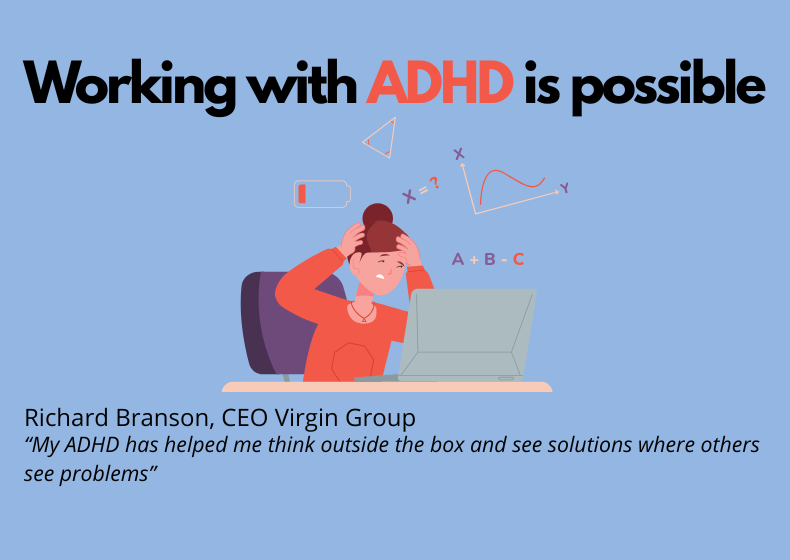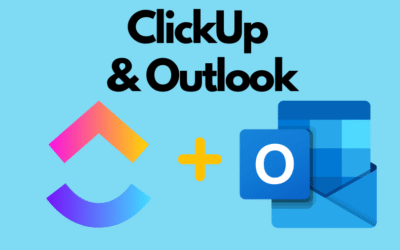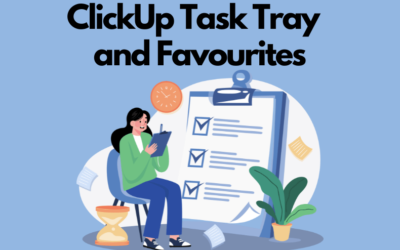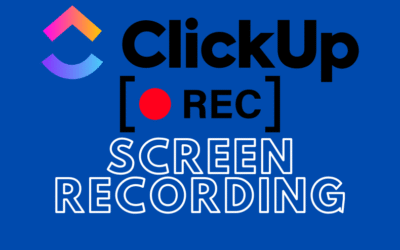Introduction
ADHD (Attention Deficit Hyperactivity Disorder) is not just a childhood condition. It accompanies many people throughout their lives, including adulthood, in professional work and daily responsibilities. Contrary to common belief, ADHD does not mean a lack of intelligence, laziness, or ambition. It’s simply a different way the brain functions.
Many people with ADHD face challenges in organizing work, focusing, and managing time, but they also often demonstrate tremendous creativity, the ability to respond quickly to change, and extraordinary passion for their projects. These unique traits can enable people with ADHD to achieve great things—provided they find their own strategies and a supportive work environment.
The aim of this article is to show that ADHD does not prevent professional success. With the right knowledge, tools, and support, people with ADHD can build a satisfying, effective, and stable career.
In the following sections, you will find:
- inspiring examples of people with ADHD who have achieved success,
- a discussion of common difficulties that may arise,
- scientifically proven strategies for coping with challenges,
- tips for families, coworkers, and managers,
- and an overview of the ClickUp tool as a support for organizing both individual and team work.
Whether you have ADHD, work with someone who has it, or are the parent of a child with the condition, you’ll find practical tips here to help you better understand, support, and nurture potential.
1. Working with ADHD is possible (inspirations)
ADHD does not mean limited potential—quite the opposite. For many people, this condition has become a driving force behind creating their own career paths, innovative problem-solving approaches, or succeeding where conventional methods failed.
Examples of well-known people with ADHD show that diverse brain functioning can be a tremendous strength:
- Richard Branson, founder of Virgin Group, openly speaks about his struggles with focus and organization at school. His unconventional thinking and boldness in taking risks led to the creation of one of the world’s most recognizable brands.
- Michael Phelps, multi-time Olympic swimming champion, dealt with ADHD in childhood. Family support and focusing on his passion helped him unlock tremendous potential.
These examples show that ADHD does not have to be an obstacle to achieving goals. Of course, success doesn’t happen by itself. It requires understanding one’s strengths and weaknesses, working on appropriate strategies, and adapting the work environment to one’s needs.
ADHD does not mean one path only. Not everyone has to become an entrepreneur, athlete, or artist. The key is not comparing yourself to others based on standard success metrics, but finding your own way of organizing, working, and growing.
2. Common challenges in working with ADHD
ADHD affects many aspects of daily functioning, and the work environment—often requiring organization, focus, and punctuality—can highlight certain difficulties.
It’s important to note that not everyone with ADHD experiences all these challenges to the same degree, but here are the most common ones:
2.1 Problems with concentration and maintaining attention
People with ADHD may struggle to stay focused on one task for extended periods, especially when the topic isn’t particularly interesting. Even minor external stimuli—like background conversations, notifications, or changing surroundings—can effectively divert attention from work.
2.2 Tendency toward procrastination
High impulsivity and time management difficulties may lead to postponing tasks, especially if they involve many steps or seem boring or overwhelming. Procrastination is often mistaken for laziness, while in reality, it stems from difficulty initiating action.
See the article on procrastination: link
2.3 Difficulties in work organization
Planning, prioritizing, and managing multiple tasks at once are areas where people with ADHD may need extra support. Without a clear work structure, chaos, missed deadlines, or forgotten important tasks are common.
2.4 Impulsiveness
Making decisions without fully considering all options, emotional reactions in stressful situations, or difficulty in controlling immediate responses are challenges that can affect both work quality and team relationships.
2.5 Difficulties with emotional regulation
People with ADHD often feel emotions more intensely. Frustration, stress, and overwhelm can arise quickly and be harder to manage, especially in demanding work environments.
2.6 Problems maintaining motivation
Long-term projects that don’t offer immediate gratification can be particularly difficult for people with ADHD. Motivation often depends on strong emotional impulses, so maintaining engagement over time requires special strategies.
3. Scientific strategies for coping with ADHD at work
Although ADHD brings challenges, there are many proven methods that help people function effectively at work. Evidence-based strategies for time management, organization, and concentration are invaluable for both individuals with ADHD and their work environments.
3.1 Structuring the day and work environment
Creating fixed routines and repetitive patterns helps limit chaos and reduce the number of decisions that must be made during the day.
Researchers emphasize that an organized space (desk, computer, notes) and a clear daily plan reduce cognitive overload, promoting better concentration.
How to implement:
- Start each day with a short planning session.
- Work during consistent hours with scheduled breaks.
- Minimize unnecessary stimuli (e.g., mute notifications, use noise-canceling headphones).
3.2 Microtasking technique — breaking large tasks into smaller ones
Studies show that people with ADHD are more engaged when tasks are clearly defined and short-term. Breaking large projects into small, concrete steps increases a sense of control and motivation.
How to implement:
- Turn tasks like “write report” into “create outline”, “write introduction”, “analyze results”.
- Celebrate each completed subtask to build motivation.
3.3 Using external cues and reminders
People with ADHD often benefit from external supports that remind them of tasks and goals.
Research on executive functions has shown that alarms, checklists, or notifications can effectively compensate for difficulties in self-monitoring tasks.
How to implement:
- Set reminders for key tasks.
- Use daily or project-based checklists.
- Create timed notifications (e.g., for breaks or task stages).
3.4 Body doubling technique — working in the presence of others
A useful productivity tool for people with ADHD is the “body doubling” technique—doing work in the presence of another person who is also working on their own tasks.
The presence of another person acts as an attention anchor, reducing distractions.
How to implement:
- Work next to a friend, colleague, or virtually (e.g., in online coworking sessions).
- Schedule shared “work blocks”, even without active collaboration.
3.5 Creating a concentration-friendly environment
Research indicates that changing the environment (e.g., working in a library or coworking space) can improve focus for people with ADHD.
The key is limiting unnecessary stimuli and creating a clear division between the “work zone” and the “relaxation zone”.
How to implement:
- Designate a space at home/office solely for work.
- Use time-blocking techniques (e.g., Pomodoro method: 25 minutes of work, 5-minute breaks).
- Use white noise or focus-enhancing music.
3.6 Self-Compassion and Acceptance Techniques
An important aspect of managing ADHD is developing self-compassion, the ability to accept one’s own difficulties without excessive self-criticism.
Research in positive psychology shows that people who treat themselves kindly cope better with challenges and are less likely to become discouraged.
How to implement it:
- Instead of saying “I failed again,” say “That was difficult, but I’m still trying.”
- Recognize your own progress, even if it’s small.
- Learn to let go of perfectionism—it often increases frustration and stress.
4. Myths About ADHD and Work (Debunking Stereotypes)
Despite growing awareness of ADHD, many myths and misconceptions still persist, including in the workplace. These stereotypes can lead to misunderstandings, unnecessary stress, and even limit the career opportunities of people with ADHD. It’s time to confront and debunk the most common myths.
Myth 1: “People with ADHD are lazy or irresponsible”
Facts:
ADHD affects the brain’s executive functions—planning, organizing, and initiating tasks—but not internal motivation or the desire to achieve goals.
In reality, people with ADHD often put in more effort than others to complete tasks that may seem “simple” to most.
Myth 2: “People with ADHD can’t work in teams”
Facts:
When properly supported, people with ADHD are often great team members: creative, enthusiastic, and quick to respond.
Difficulties may arise in disorganized work environments or where collaboration rules are unclear—but that’s a challenge for everyone, not just people with ADHD.
Myth 3: “ADHD is just an excuse for everything”
Facts:
ADHD is a recognized neurodevelopmental disorder described in medical classifications such as the DSM-5 and ICD-11.
Needing to use different work strategies or requiring additional support is not about avoiding responsibility—on the contrary, it often takes a great deal of self-discipline and courage.
Myth 4: “Adults with ADHD should have outgrown it”
Facts:
ADHD is a developmental disorder that can last a lifetime. While some adults learn to compensate for symptoms, difficulties with attention, organization, and impulsivity can remain.
Working on oneself, developing coping strategies, and using proper tools can significantly improve quality of life and work—but ADHD doesn’t just “go away.”
Myth 5: “ADHD is just a concentration problem”
Facts:
ADHD affects many areas of functioning: emotional regulation, impulse control, working memory, planning, and perseverance.
Sometimes concentration shows up as “hyperfocus,” when focusing on one thing blocks out all other stimuli. It’s also when people with ADHD often make the most progress on tasks. Everyone knows someone who, once focused on something, is completely unresponsive to the outside world.
5. How to Support People with ADHD (For Managers, Coworkers, and Families)
Supporting someone with ADHD at work or in daily life doesn’t require specialized psychological knowledge—it mainly requires awareness, openness, and understanding.
Here are proven ways to help people with ADHD achieve their potential.
5.1 Understanding and Patience
The first step is understanding that the difficulties experienced by someone with ADHD (e.g., forgetting deadlines, trouble concentrating) are not due to bad intentions.
People with ADHD are often most frustrated with themselves. A patient, calm approach helps build trust and reduce stress levels.
What you can do:
- Avoid judgmental comments like “you just need to try harder” or “this is so simple.”
- Show empathy and offer support with organization or task prioritization.
5.2 Clear Communication
People with ADHD function better when expectations are clearly defined and goals are broken down into smaller steps.
What you can do:
- Set specific deadlines and expected outcomes.
- Send written summaries of meetings or agreements.
- Use simple, clear language. Avoid long, multi-threaded instructions.
5.3 Help with Work Organization
Implementing clear structures and systems is a huge support. People with ADHD often create complex systems themselves—but find it hard to maintain them.
What you can do:
- Help prioritize and break projects into smaller tasks.
- Implement task management tools (such as ClickUp, discussed later).
- Encourage regular task and goal reviews.
5.4 Flexibility in Approach
ADHD doesn’t mean someone has to work completely differently than the rest of the team, but small flexibilities can significantly increase efficiency.
What you can do:
- Allow short breaks during work.
- Enable working in quiet or customized environments (e.g., remote work on certain days).
- Be open to different ways of achieving the same goal—the outcome matters more than the method.
5.5 Strengthening Strengths
People with ADHD often have unique talents: they are creative, think outside the box, notice details others miss, or excel in crisis situations.
What you can do:
- Acknowledge successes and strengths, even the less obvious ones.
- Provide space for creative thinking and innovative solutions.
- Let them use their individual strengths in everyday work.
6. ADHD in Children and Teens in the Context of Future Work
ADHD is often diagnosed in childhood or adolescence. How a young person functions in adulthood—including professionally—largely depends on the support they receive at key developmental stages.
Children and teens with ADHD have huge potential. Their energy, creativity, and unconventional thinking can lead to exceptional career paths in the future. However, to make this possible, they need not only treatment (if indicated) but above all the development of specific skills.
6.1 Skills Crucial for Future Careers
- Emotional self-regulation — teaching children to recognize and control their emotions helps with future teamwork and stress management.
- Organization and planning — simple organizational systems introduced early (e.g., reminders, planners) create habits that pay off in adulthood.
- Building a sense of agency — encouraging kids to make small decisions and take responsibility for them builds confidence and independence.
- Flexible thinking — rather than rigidly following patterns, support creative problem-solving.
6.2 Role of Parents and Teachers
Parents and teachers play a key role in shaping a positive attitude toward work and challenges in young people with ADHD.
What you can do as a parent or teacher:
- Focus on strengths, not just difficulties.
- Teach simple work organization techniques from an early age.
- Give room for learning through action and personal experience.
- Support healthy self-esteem—without comparisons to peers.
- Show that “failures” are a natural part of learning and growth.
6.3 Career Futures for People with ADHD
Young people with ADHD can thrive in many fields—from the arts to technical, academic, or entrepreneurial paths.
The most important thing is to not limit their potential with rigid frameworks and to give them space to grow in what they do best.
7. ClickUp as Support for Work and Organization
Modern technologies can be a great support for people with ADHD—if properly chosen. One such tool is ClickUp—a versatile system for managing tasks, projects, and daily work.
ClickUp is especially friendly to people with ADHD because it allows for simple structure building, breaking tasks into small steps, and maintaining focus on what matters most.
Below are ClickUp features that are particularly effective for ADHD users:
7.1 Task Lists and Checklists
ClickUp makes it easy to create task lists and checklists within larger projects.
This allows overwhelming projects to be broken into smaller, more manageable steps, in line with the “microtasking” technique.
How it helps:
- Reduces feelings of overwhelm.
- Provides satisfaction from checking off completed steps.
- Makes progress easier to track.
7.2 Automatic Reminders and Notifications
ClickUp allows you to set reminders for tasks, deadlines, and events—within the app, via email, or on your phone.
How it helps:
- Supports working memory.
- Helps maintain work rhythm without constant self-monitoring.
7.3 “Home” View and Prioritization
The Home view, especially the My Work card, helps people with ADHD focus only on tasks planned for today without being overwhelmed by all projects. We also recommend the custom Everything views we deploy during implementations, which display an individual’s tasks for today, upcoming, and overdue.
How it helps:
- Reduces distraction.
- Makes it easier to plan a realistic daily workload.
- Helps focus on the most important things.
7.4 Setting Small Steps (Subtasks)
ClickUp allows easy breakdown of tasks into smaller subtasks and tracking progress at each stage.
How it helps:
- Enhances a sense of control over tasks.
- Maintains motivation through visible progress.
- Reduces overwhelm from large projects.
7.5 Setting Deadlines and Calendar-Based Work
ClickUp allows you to schedule work in a calendar, assign tasks to specific times, and set reminders for upcoming work blocks. Integration with Google Calendar lets you see calendar events and ClickUp tasks in one place.
How it helps:
- Helps build a daily structure.
- Makes time management easier and reduces overload risk.
- Supports creation of healthy work habits (e.g., planning breaks).
7.6 Dashboards and “All-in-One” Views
People with ADHD may struggle with managing multiple projects. ClickUp offers dashboards that display key information in one place: today’s tasks, projects needing attention, upcoming deadlines.
How it helps:
- Makes it easy to get a quick overview without searching through multiple places.
- Reduces the feeling of chaos.
At BeProductive, we specialize in ClickUp implementations tailored to individual user needs—including work styles specific to people with ADHD.
We help not only configure the system but also choose the best work practices, build a simple structure, and teach how to use the tools in a way that genuinely simplifies everyday organization.
If you want to learn more about implementing ClickUp, contact us—we can create a work environment that supports your natural strengths.
Summary
ADHD brings specific challenges, but it is just as often a source of remarkable talents, creativity, and unconventional thinking.
Working with ADHD is like a journey—it requires self-awareness, the use of appropriate strategies, and the creation of an environment that strengthens one’s strengths rather than focusing solely on difficulties.
In this article, we have shown:
- that people with ADHD can achieve professional success and build fulfilling careers,
- what challenges they most often face and how science-based strategies can help manage them,
- how important support from family, teachers, coworkers, and managers is,
- how to effectively build work structure, even when focus and organization aren’t natural strengths.
Well-chosen tools, such as ClickUp, can play a huge role in this process by helping maintain order, break down big goals into small steps, and provide daily reminders of what truly matters.
Thanks to its flexibility and customization options, ClickUp becomes an ideal support tool for both individuals and teams working with people with ADHD.
At BeProductive, we not only help implement ClickUp but also teach how to use it to build an effective, organized work style tailored to the user’s real needs.
Contact us today – We will help you implement ClickUp comprehensively!
Click below to learn more!
Schedule a free consultation




